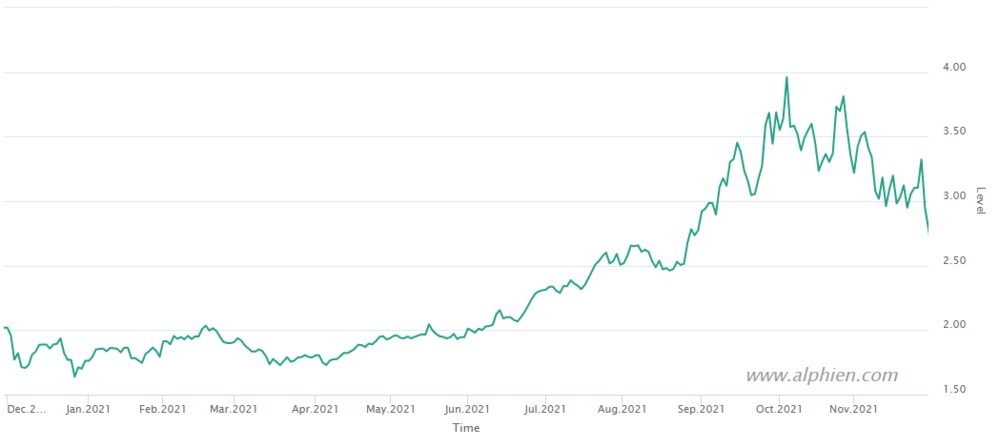Global Macro/Metals
The Omicron variant of the COVID-19 virus completely changes the global growth outlook, with a strong impact on commodity demand. The variant, first identified in Southern Africa, is likely to be more transmissible than the Delta, more resistant to vaccination (or reinfection) and equally as severe as the other variants. Even with a much more prepared response, there is still much uncertainty around the impact but if we follow the effective rate of spread seen in South Africa, the spread is twice as fast as the Delta variant. The expected slower growth, may not relieve inflationary pressures so quickly and stagflation is even more likely for 2022. With expected lower real rates (hawkish stance may be put on hold if the virus continues to spread), gold has not benefited yet from this risk off episode (flat in November), with the increased correlation of crypto prices to the equity market, precious metals remain on the sideline of the commodity demand that we are seeing in base metals. The slowing economic activity in China1 and the prospect of reduced growth poses risks for the price action in base metals even if the structural nature of copper and aluminium remain very bullish.
Energy
Omicron has triggered one of the sharpest sell-offs in the oil market, Brent prices declined by 10% on November 26th, the largest drop since April 2020 (exacerbated by the usually low trading activity on Black Friday). The relatively parallel nature of the sell-off could also be interpreted as the market pricing a shallower but longer demand hit. OPEC+ agreement to continue ramping up production by 0.4 mb/d in January is a slight change of stance from the group reiterated caution over the last year but is more aligned with tensions with the US administration when prices reached a 8-years high (leading to SPR release) and the reduction of the incentive in coming to a deal with Iran (which would provide additional barrel immediately). Natural gas divergence across the Atlantic has been the strongest due to the political consideration around the NS2’s pipeline certification, the delay will allow Nord Stream AG time to set-up a subsidiary to own and operate the German section of the pipeline. UK NBP gas was up 38% in November (up nearly 400% YTD) as the Henry Hub gas contract was down 17%.
Natual Gas
Agriculture
Soft commodities, particularly cotton, coffee and cocoa experienced a sell off and worries about consumption. Cocoa and coffee demand is strongly linked to the hospitality and catering industry with a likely impact from the Omicron variant. The grain sector has been slightly affected so far with a slight retracement on the month.
Volatility
November started quite calmly in the volatility sector, with good economic data in the US and new highs in equities, despite some concerns about inflation that the Federal Reserve seemed willing to address. But as the news of the Omicron variant came out, and before much was known about the variant, fears of the consequences to the economy led to an immediate spike of volatility (in tandem with underlying price corrections) in most assets, especially in equities and energy. The VIX and VSTOXX are up from high teens to high twenties, the highest levels since February. Whereas, the ATM implied volatility for crude jumped from 33% to 70% on the month, levels not seen since May of last year.
1 Read our latest report to our proprietary index on Commodity Leading Index Economic Activity China
Source: Four Elements Capital


